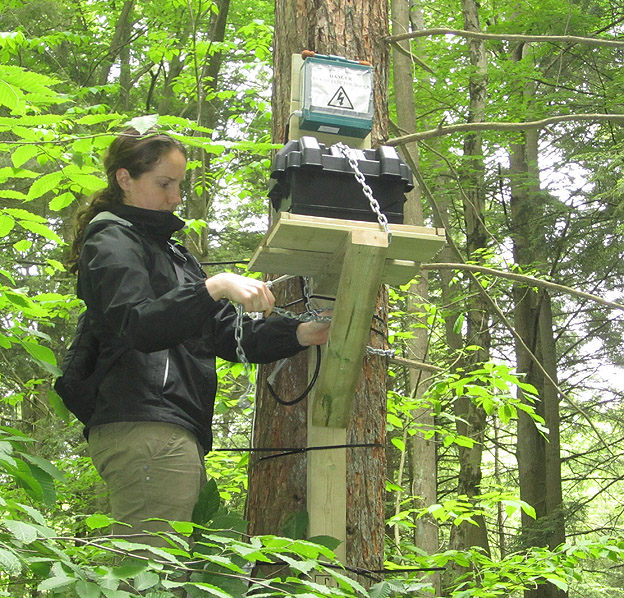Recording the call of the (fragmented) wild

Fourth year biology student Kristen Grittani sets up a remote recording device in a fragmented section of forest south of Hamilton, Ont. Grittani found that by using remote recordings, researchers can gather more information about indicator species, such as the ovenbird, which provide insights into forest health.
Last summer when one of her biology professors approached her with a project idea, Kristen Grittani wasn’t particularly interested in birds.
She is now.
That professor, Pat Chow-Fraser, needed someone to visit fragmented woodlands in Haldimand and Norfolk counties, south of Hamilton, to plant high-tech recording devices among the trees.
The idea was to see if remote recording devices could capture the call of the elusive ovenbird as well as human observers. The ovenbird is a small songbird that avoids the outer perimeters of its habitat, making it an indicator of forest health.
“Everything Dr. Chow-Fraser does is about conservation, and I knew that’s the field I wanted to get into,” says Grittani. “So the opportunity came up and I took it – and that’s how I got into birds.”
Grittani and a volunteer travelled to two fragmented forests to place small recording devices 10 feet up in the trees. They then analyzed 10 days’ worth of uninterrupted audio, captured using special computer software that generated spectrogram images of recorded calls.
This allowed the researchers to zero in on those most likely to be from the ovenbird.
Such monitoring traditionally involves researchers and birdwatchers spending time in the field, recording calls for short intervals and taking notes on the types of birds they hear.
“The point was to evaluate how much more efficient we could be with the recording devices versus being in the field ourselves,” says Grittani.
The team found that they could track ovenbird calls just as efficiently with the recordings as by being present in the woods themselves.
“It gives us much more information to work with, and lets us record whenever it’s best to hear less common species, like the ovenbird,” Grittani says.
It also frees up researchers to work on other things, helping the resource-strapped conservation movement.
Grittani presented her work at this year’s Ontario Biology Day conference, hosted at McMaster March 16 and 17.
Hundreds of researchers and students from southern Ontario discussed biodiversity, ecology, microbiology, molecular biology and human genetics at the event.
